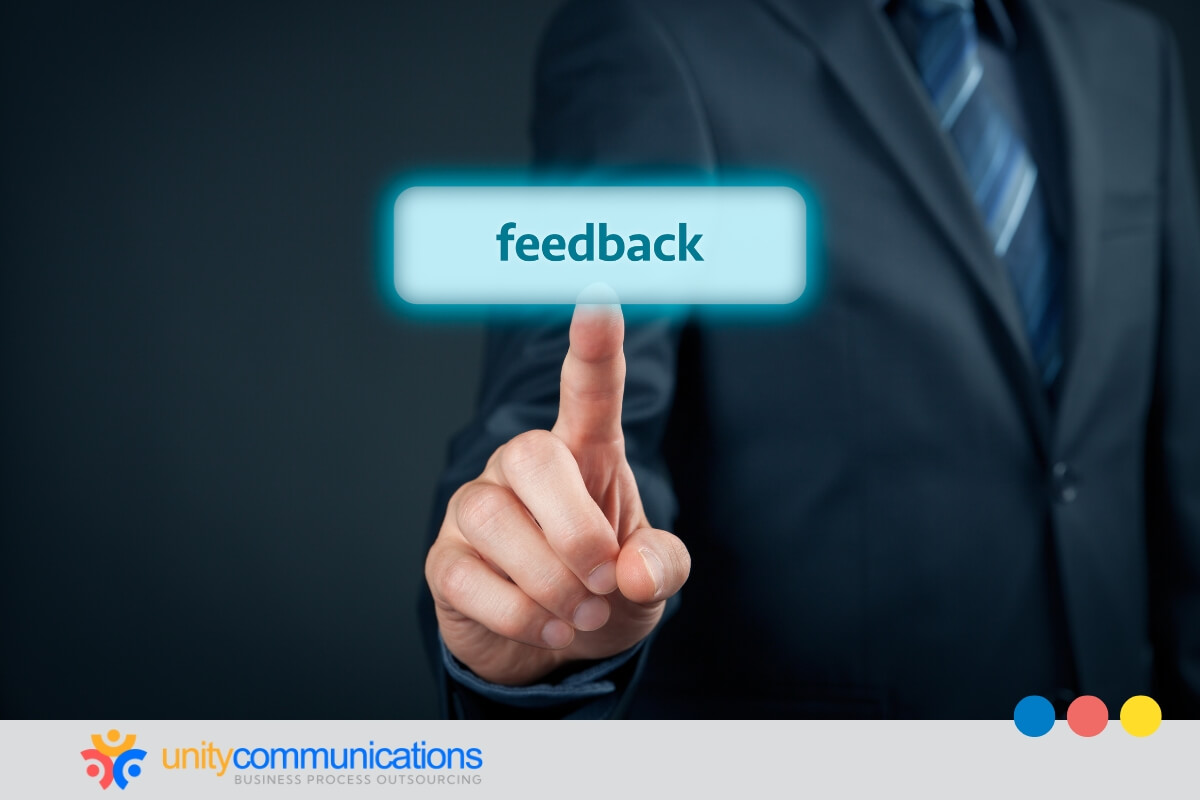Table of Contents
AI agents are intelligent programs that take complex goals, break them into actionable tasks, and execute them using advanced reasoning, memory, and tool integration.
They aren’t self-aware machines, but are powerful collaborators, automating routine processes, handling complex decision-making, and supporting humans in ways that go well beyond scripted chatbots.
Understanding AI agent fundamentals has become essential for businesses looking to stay competitive. Whether you’re exploring AI agent services or considering how intelligent automation fits into your outsourcing strategy, this guide covers everything you need to know about AI agents, their capabilities, and their real-world applications.
What are AI agents?

Before diving deeper into AI agent fundamentals, it’s essential to clarify exactly what an AI agent is. An AI agent is a program that can perceive its environment, process information, and take action toward achieving a specific goal without constant human direction.
Unlike traditional automation scripts, AI agents can:
- Adapt, learn, and make context-aware decisions, making them far more versatile.
- Go beyond rigid instructions, setting them apart from regular automation tools.
In practice, AI agents can accept a broad range of objectives. You can give them a command such as “summarize customer feedback,” “manage my inbox,” or “analyze quarterly financial trends,” and they will break it down into smaller, actionable steps.
The global AI agent market reflects the significant advantages this technology has to offer. Valued at $5.4 billion in 2024, the industry could reach $50.31 billion by 2030, representing a compound annual growth rate (CAGR) of over 45%.
This explosive growth reflects how organizations are recognizing AI agents as essential tools for enhancing operational efficiency and achieving a competitive advantage.
6 AI agent fundamentals
Every powerful AI agent has six core fundamentals. These pillars define how agents perceive, reason, and interact to deliver intelligent, reliable results.
1. Autonomous operation
AI agents operate with minimal human supervision. Once given a goal, they can independently determine the steps required to achieve it, reducing the need for constant oversight.
2. Goal-oriented intelligence
Rather than being locked into pre-written workflows, AI agents start with an objective and dynamically generate the steps to reach it. This makes them versatile to handle various tasks.
3. Continuous learning and adaptation
Another AI agent’s fundamental principle is its ability to learn. It analyzes feedback and outcomes to refine strategies over time. In business, this means better accuracy in tasks such as demand forecasting or fraud detection as the agent gains experience.
4. Context-aware decision making
Unlike traditional bots that provide generic outputs, AI agents use reasoning and memory to tailor their actions. For instance, an AI sales assistant could recall past conversations with a customer and adjust its approach to provide more personalized recommendations.
5. Seamless tool integration
AI agents don’t work in isolation. They connect to application programming interfaces (APIs), databases, customer relationship management (CRM) systems, and other platforms to carry out complex workflows. One example is a finance-focused agent that could pull data from multiple systems, analyze it, and generate an actionable summary for decision-makers.
6. Infinite scalability
You can scale the complexity and workload of your AI agents from simple data entry to large-scale processes. You can deploy one agent to automate routine admin tasks or a network of agents to manage entire operations across departments.
These characteristics of AI agents form the building blocks that make it flexible, intelligent, and able to complement human teams.
How AI agent technology works: The four-stage process

Now that we’ve defined AI agent fundamentals and their key characteristics, the next step is understanding how they actually work. AI agent technology combines perception, reasoning, and action. The agent takes in information from its environment, interprets it using machine learning (ML) models, and then decides what action to take to achieve its goal.
A major driver of today’s progress is large-language models (LLMs). These models enable AI agents to process natural language, interpret user intent, and generate human-like responses. More importantly, LLMs allow agents to reason through tasks, break down complex goals into smaller steps, and even chain tasks together.
Put simply, they provide the “thinking” layer that transforms static bots into intelligent digital coworkers.
To simplify how AI agents work, here’s a breakdown of their core mechanisms. While the exact process can vary depending on the framework or use case, most AI agents follow a typical cycle of input → reasoning → action → feedback.
1. Input and perception: How do AI agents process information?
AI agents begin by gathering information from their environment. This input can come in many forms, including:
- Natural language or commands from a user, such as “summarize this report” or “schedule a meeting”
- Structured data such as financial records, customer support tickets, or sales figures
- System signals such as sensor data, alerts, or logs from integrated software
This is a critical stage because the quality and clarity of input often determine the accuracy of the agent’s output. LLMs enhance this step by helping agents interpret ambiguous language and extract meaning from complex data.
2. Reasoning and planning: How do they decide the next step?
After receiving the input, the agent uses its reasoning engine powered by an LLM to figure out what the user wants and how to achieve it. This involves:
- Interpreting the underlying goal behind the request
- Dividing a significant objective into smaller, manageable steps
- Deciding which external applications, APIs, or databases to use
Suppose you ask an AI agent to generate a market research summary. In that case, it might decide to (a) pull data from online sources, (b) analyze trends using statistical tools, and (c) organize findings into a readable report.
3. Action and execution: How do AI agents carry out tasks?
After planning, the agent takes action. Depending on its capabilities, this could mean:
- Searching a database and retrieving relevant information
- Drafting emails, reports, or proposals in natural language
- Executing commands in third-party applications such as CRMs, project management tools, or customer service platforms
- Coordinating with other AI agents to complete multi-step workflows
This step highlights why AI agent technology is so powerful. It doesn’t just provide answers; it does the work by integrating with the systems you already use.
4. Feedback and learning: How do they improve over time?
Finally, AI agents evaluate the outcome of their actions using feedback. Feedback can come from:
- Users approving, correcting, or rejecting results
- Performance metrics such as whether the task was completed on time or met accuracy standards
- Environmental signals that detect changes in data or new conditions
Using this feedback loop, agents improve over time. For instance, if a sales agent consistently sends follow-up emails that don’t get opened, they might adjust subject lines, timing, or messaging style based on past results.
This adaptability is one of the defining characteristics of an AI agent. Workplace forecasts reflect the disruptive nature of AI agent technology.
Studies predict that AI agents will soon make 15% of daily work decisions autonomously. This shows how organizations trust AI agents to take on responsibilities that once required human judgment.
Four types of AI agents: From basic to advanced intelligence
Different types of AI agents have various levels of complexity, autonomy, and application. These categories help you identify which solutions fit your needs and even how outsourcing works when AI is integrated into business process outsourcing (BPO).
1. Model-based agents
Model-based agents maintain an internal model of their environment. This allows them to understand context, adapt responses, and make more informed decisions. For example, an AI agent deployed in customer support can reference a client’s history before suggesting solutions and improving personalization.
2. Goal-based agents
Goal-based agents can achieve defined outcomes rather than simply respond to inputs. They evaluate different pathways to a goal and choose the most effective one. These agents might manage logistics routes, optimize marketing campaigns, or streamline hiring processes in recruitment.
3. Utility-based agents
These agents go a step further by assessing the value of different outcomes and selecting the option that maximizes utility. They’re ideal for scenarios with multiple possible solutions, such as risk management in finance or prioritizing high-value leads in sales pipelines.
4. Learning agents
Learning agents are the most advanced. They act autonomously while refining their decision-making over time by incorporating feedback and new data. A learning agent deployed in a contact center could continuously improve how it handles escalations, leading to higher efficiency and customer satisfaction.
Traditional business process outsourcing relied heavily on human labor for tasks such as customer service, back-office management, or data entry. Now, AI agents can work alongside human teams to handle routine functions.
The bottom line

AI agents are moving from novelty to necessity. Like new human employees, you can now onboard them to gain access to company data, adapt to workflows, and complement human responsibilities.
However, you must understand AI agent fundamentals to maximize the technology’s benefits. The best way to start is by partnering with experts who combine AI intelligence with human insight. Let’s connect to see how you can get started.




